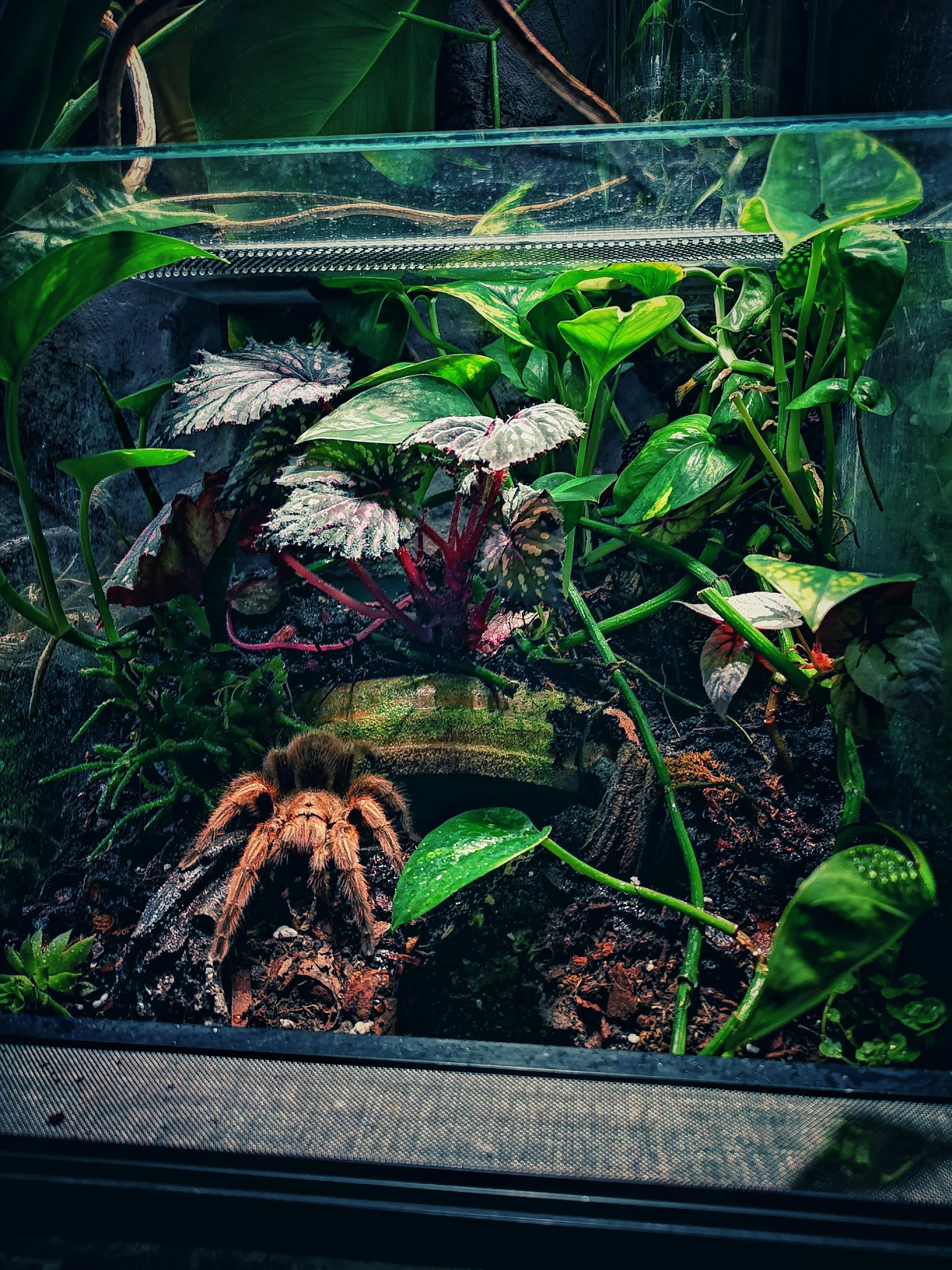Rose Hair Tarantula: 5 Essential Care Needs
The Rose Hair Tarantula, a popular pet among arachnid enthusiasts, is known for its docile nature and relatively easy care requirements. However, like any pet, these fascinating creatures need specific care to thrive. Providing the right environment, food, and attention will ensure your Rose Hair Tarantula lives a long, healthy, and fulfilling life. This guide will cover the top 5 essential care needs, helping you become a successful tarantula owner and ensuring the well-being of your eight-legged friend. Remember, responsible pet ownership is key to the happiness of your Rose Hair Tarantula.
Habitat Setup for Your Rose Hair Tarantula
Creating the right habitat is paramount for the well-being of your Rose Hair Tarantula. The enclosure should mimic their natural environment, providing a secure and comfortable space. This involves choosing the right enclosure, providing appropriate substrate and decor, and maintaining optimal temperature and humidity levels. A well-designed habitat not only meets the tarantula’s physical needs but also allows you to observe and enjoy your pet’s natural behaviors. The goal is to create an environment where your tarantula feels safe, secure, and can thrive.
Choosing the Right Enclosure
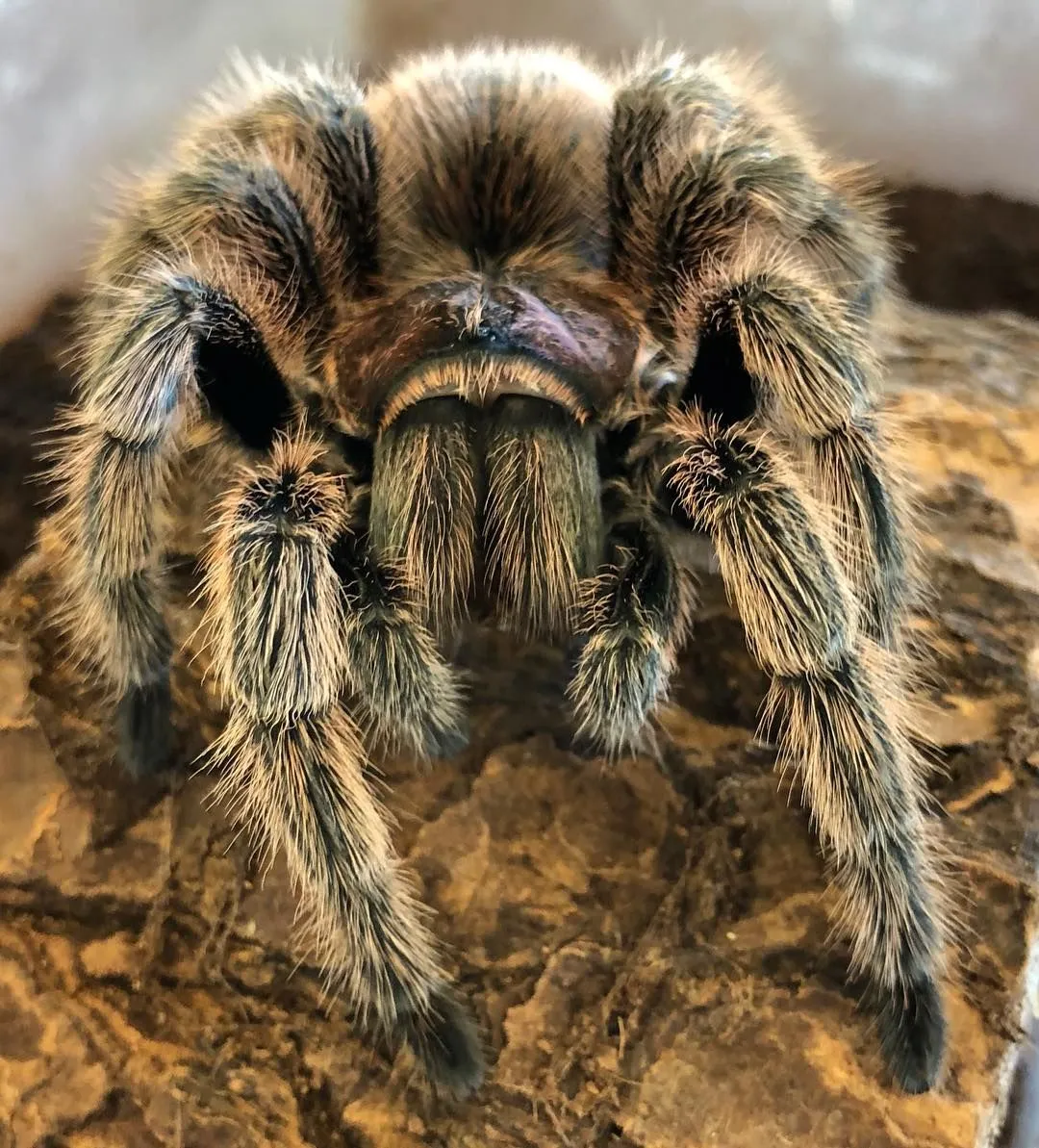
The size of the enclosure is crucial. A juvenile Rose Hair Tarantula can be housed in a smaller container, such as a deli cup or a small terrarium. However, as they grow, they’ll need more space. A good rule of thumb is to provide an enclosure that is at least three times the tarantula’s leg span in width. The enclosure should have a secure lid to prevent escape and adequate ventilation to ensure proper air circulation. Glass or clear plastic enclosures are ideal, allowing you to easily observe your pet while providing a safe and stable environment. The enclosure should also be escape-proof, as these tarantulas are surprisingly fast.
Substrate and Decor
The substrate, or bedding, serves multiple purposes: it absorbs waste, helps maintain humidity, and provides a natural environment for your tarantula. A substrate of a few inches deep is recommended. Suitable options include a mixture of peat moss, coconut fiber, or a commercial tarantula substrate. Avoid using cedar or pine shavings, as these can be toxic to tarantulas. Decorating the enclosure with a hide, such as a cork bark, a hollow log, or a pre-made spider hide, is also important. This provides a place for your tarantula to retreat and feel secure. Adding a few artificial plants can further enhance the environment and provide additional hiding places. These elements all contribute to a less stressful and happier tarantula.
Temperature and Humidity
Rose Hair Tarantulas thrive in a temperature range of 75-85°F (24-29°C). A heat lamp or under-tank heater can be used to maintain this temperature, but it’s essential to monitor the temperature with a thermometer to prevent overheating. Humidity levels should be maintained between 60-70%. This can be achieved by misting the enclosure with water a few times a week. Avoid over-misting, as this can lead to mold growth. Proper ventilation is also important for maintaining the right humidity levels and preventing the build-up of harmful gases. A hygrometer can help you monitor the humidity levels within the enclosure.
Maintaining the Ideal Environment
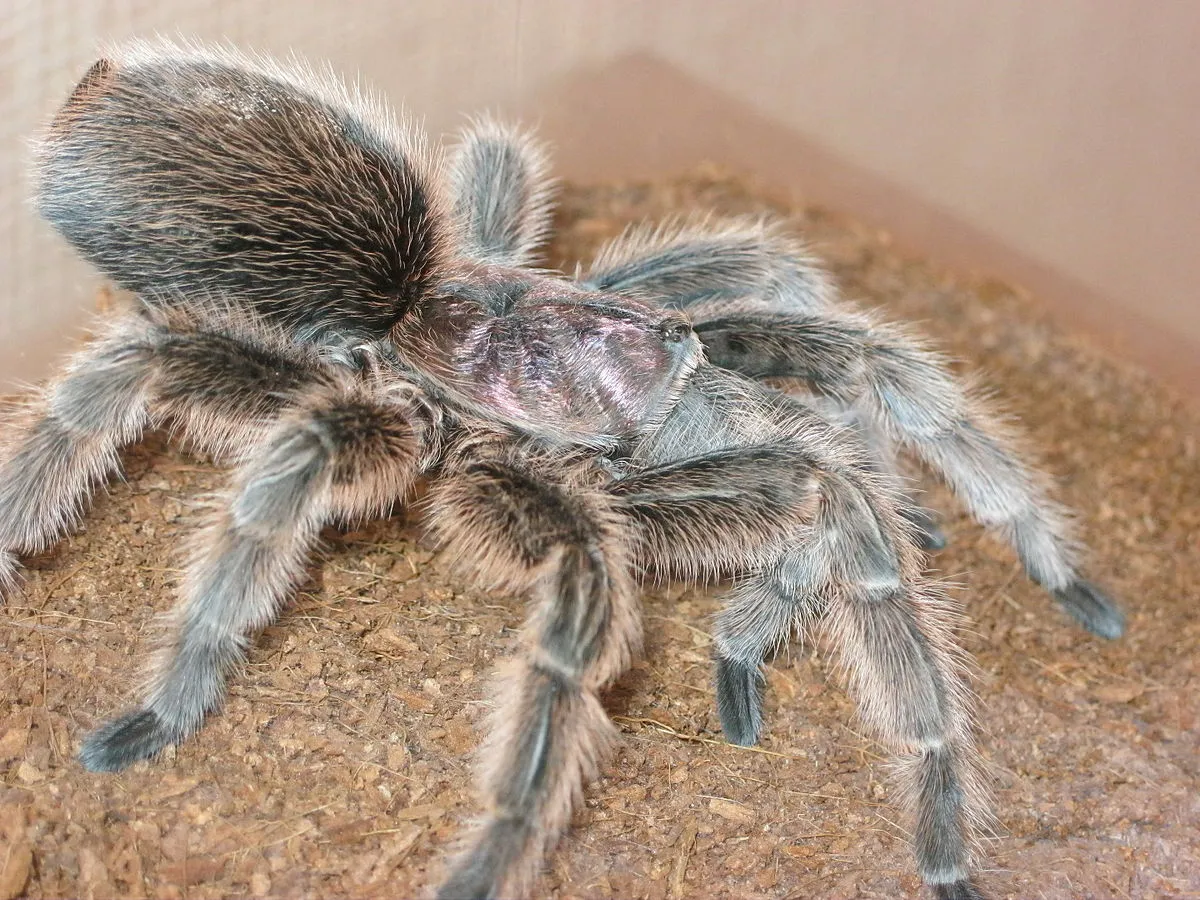
Regularly spot-clean the enclosure to remove uneaten food and waste. Replace the substrate every few months, or more frequently if needed, to maintain a clean and healthy environment. Make sure the enclosure is always clean. Check the temperature and humidity daily, and make adjustments as needed to keep them within the recommended ranges. Observe your tarantula’s behavior; a healthy tarantula will be active, eating well, and showing no signs of stress. Maintaining these factors ensures the well-being of your Rose Hair Tarantula.
Feeding Your Rose Hair Tarantula
Proper nutrition is essential for the health and growth of your Rose Hair Tarantula. They are opportunistic predators, and their diet should consist primarily of insects. Providing a varied diet and understanding how often to feed your tarantula are critical aspects of their care. Always ensure that the food items are safe and free from pesticides or other harmful substances. A well-fed tarantula is a healthy tarantula, and a healthy tarantula is a happy tarantula.
What to Feed Your Tarantula
The primary food source for Rose Hair Tarantulas should be live insects. Crickets, mealworms, and dubia roaches are excellent choices. The size of the prey should be appropriate for the size of your tarantula; as a general rule, the insect should be no larger than the tarantula’s body. You can also offer other insects occasionally, such as superworms or waxworms, as a treat. Gut-load the insects before feeding them to your tarantula by feeding the insects nutritious food such as vegetables and fruits. This ensures that your tarantula receives essential vitamins and minerals.
How Often to Feed
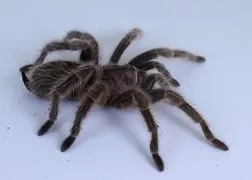
Feeding frequency depends on the age and size of your tarantula. Spiderlings should be fed more frequently, about twice a week. Juveniles can be fed once or twice a week, while adults can be fed every one to two weeks. Always remove any uneaten food within 24 hours to prevent mold growth and maintain a clean environment. Monitor your tarantula’s abdomen; if it appears plump, your tarantula is well-fed. If the abdomen seems small, you may need to increase the frequency of feeding. Remember, a tarantula’s appetite can vary.
Watering and Hydration
Water is just as crucial as food for your Rose Hair Tarantula’s survival. They need access to fresh water at all times to stay hydrated and healthy. This can be provided through a shallow water dish or by misting the enclosure regularly. Understanding how to provide and maintain access to water is essential for your tarantula’s well-being. Dehydration can be fatal, so ensuring constant access to water is critical.
Providing Fresh Water
A shallow water dish is the most common and reliable way to provide water. The dish should be shallow enough to prevent drowning and easily accessible for the tarantula. Use a small dish, such as a bottle cap or a commercial water dish designed for tarantulas. Ensure the water dish is kept clean and filled with fresh, dechlorinated water. Change the water regularly, at least twice a week, to prevent the growth of bacteria and keep the water fresh. Clean water is essential for tarantula health.
Humidity Management
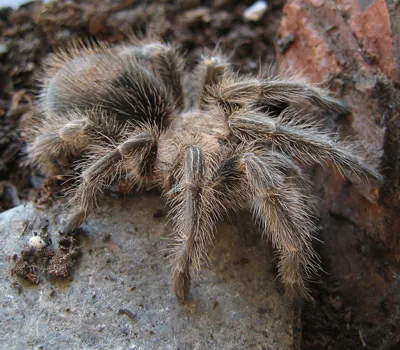
While the primary source of water is the water dish, humidity also plays a vital role in hydration. You can maintain appropriate humidity levels by misting the enclosure with water a few times a week, particularly in drier environments. Avoid over-misting, as this can lead to mold growth. Ensure proper ventilation to prevent the enclosure from becoming overly humid. Regularly monitor the substrate; it should be slightly moist, but not saturated. The right balance of humidity and access to water is crucial for your tarantula’s health and well-being.
Handling and Safety
While Rose Hair Tarantulas are generally docile, handling them requires caution and respect. Tarantulas can be easily injured, and their bites can be painful. Understanding how to handle your tarantula safely and recognizing their behavior is key to a positive interaction. Always prioritize your safety and the tarantula’s well-being when considering handling. Never handle your tarantula if you are unsure or uncomfortable. Be aware of the potential risks involved before any interaction.
Safe Handling Practices
If you choose to handle your Rose Hair Tarantula, do so with extreme care. The best approach is to gently coax the tarantula onto your hand. Avoid sudden movements and loud noises, as these can startle the tarantula. Always handle the tarantula over a soft surface, such as a bed or a carpet, in case it falls. Never squeeze or drop the tarantula. Avoid handling your tarantula when it is molting, as they are very vulnerable during this time. Wash your hands thoroughly before and after handling to prevent the spread of bacteria.
Understanding Tarantula Behavior
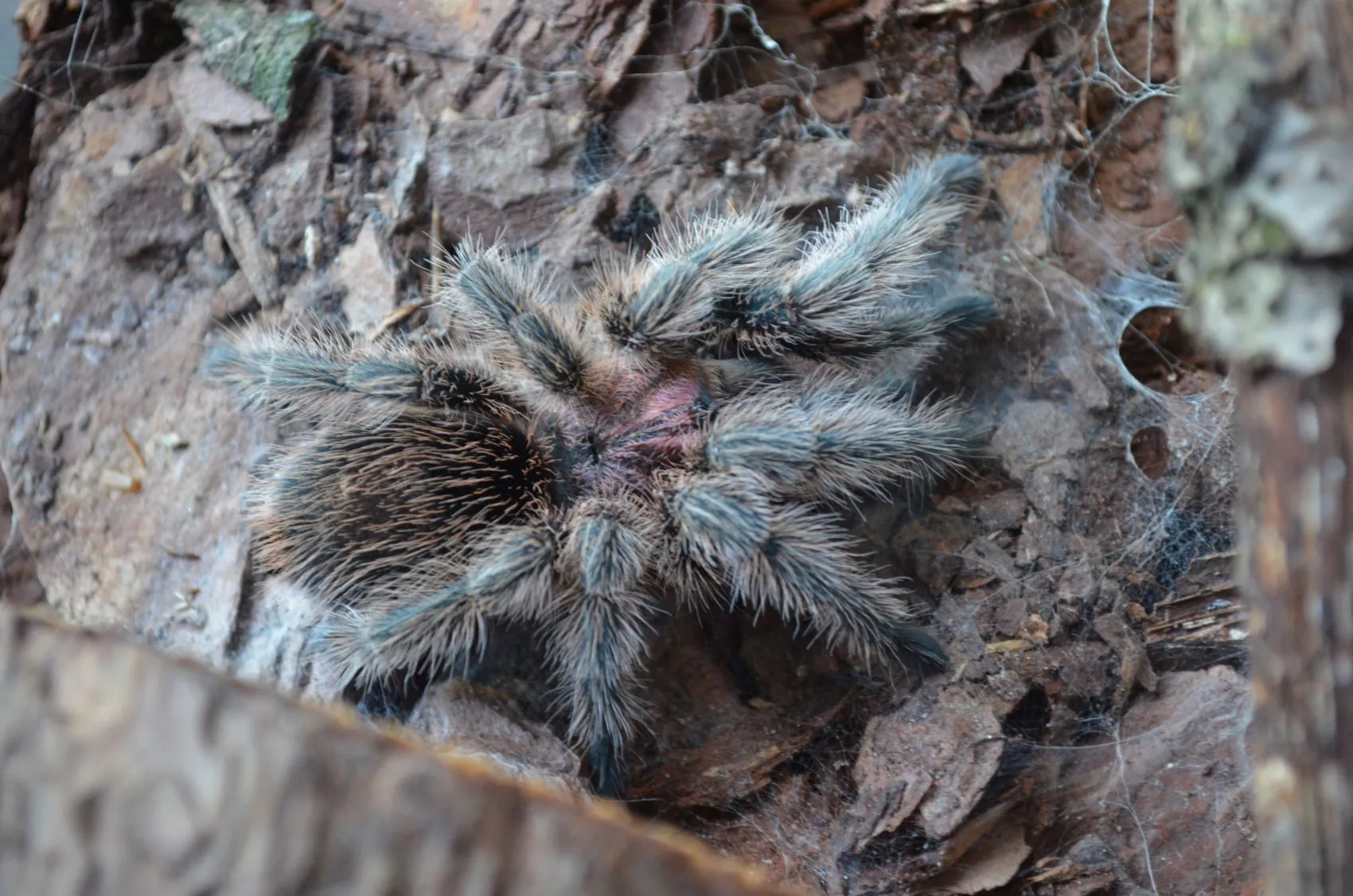
Observe your tarantula’s behavior to understand its mood and needs. If your tarantula is defensive or appears stressed, it’s best to leave it alone. Signs of stress include raising its front legs, flicking hairs from its abdomen (a defense mechanism called urticating hairs), or striking a threat posture. If your tarantula displays these behaviors, it is best to leave it alone. Respecting your tarantula’s space and understanding its behavior will help you build a positive relationship with your pet and prevent unnecessary stress for the animal.
Health and Wellness
Like any pet, Rose Hair Tarantulas can experience health problems. Recognizing common issues and understanding preventative care are crucial for ensuring your tarantula’s longevity. Regular observation of your tarantula and awareness of its environment can help you identify potential problems early on. Provide a clean environment and proper care to keep your tarantula healthy and happy.
Common Health Issues
Common health issues include mites, fungal infections, and dehydration. Mites can infest tarantulas and are often visible as small, moving dots. Fungal infections can occur in humid environments. Dehydration can occur if the tarantula doesn’t have access to fresh water or if the humidity is too low. If you suspect your tarantula has a health problem, consult a veterinarian experienced in exotic animals. Do not attempt to treat health issues without proper knowledge, as you may inadvertently harm your pet.
Preventative Care
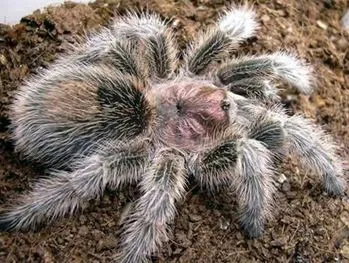
Preventative care involves maintaining a clean environment, providing a balanced diet, and monitoring the tarantula’s behavior. Regular cleaning of the enclosure, providing fresh water and appropriate humidity levels are crucial for preventing health problems. Quarantine new tarantulas before introducing them to your existing collection to prevent the spread of diseases. Observe your tarantula regularly for any signs of illness or distress. Early detection and treatment can prevent serious health issues. A well-cared-for Rose Hair Tarantula has a great chance to live a long and fulfilling life.
Conclusion
Caring for a Rose Hair Tarantula is a rewarding experience. By understanding their basic needs and providing the right environment, food, water, and care, you can ensure your tarantula thrives. Remember that responsible pet ownership involves ongoing learning and a commitment to your pet’s well-being. With the information provided, you are well-equipped to create a happy and healthy home for your Rose Hair Tarantula and enjoy the unique experience of owning such a fascinating creature. Enjoy your new companion!
